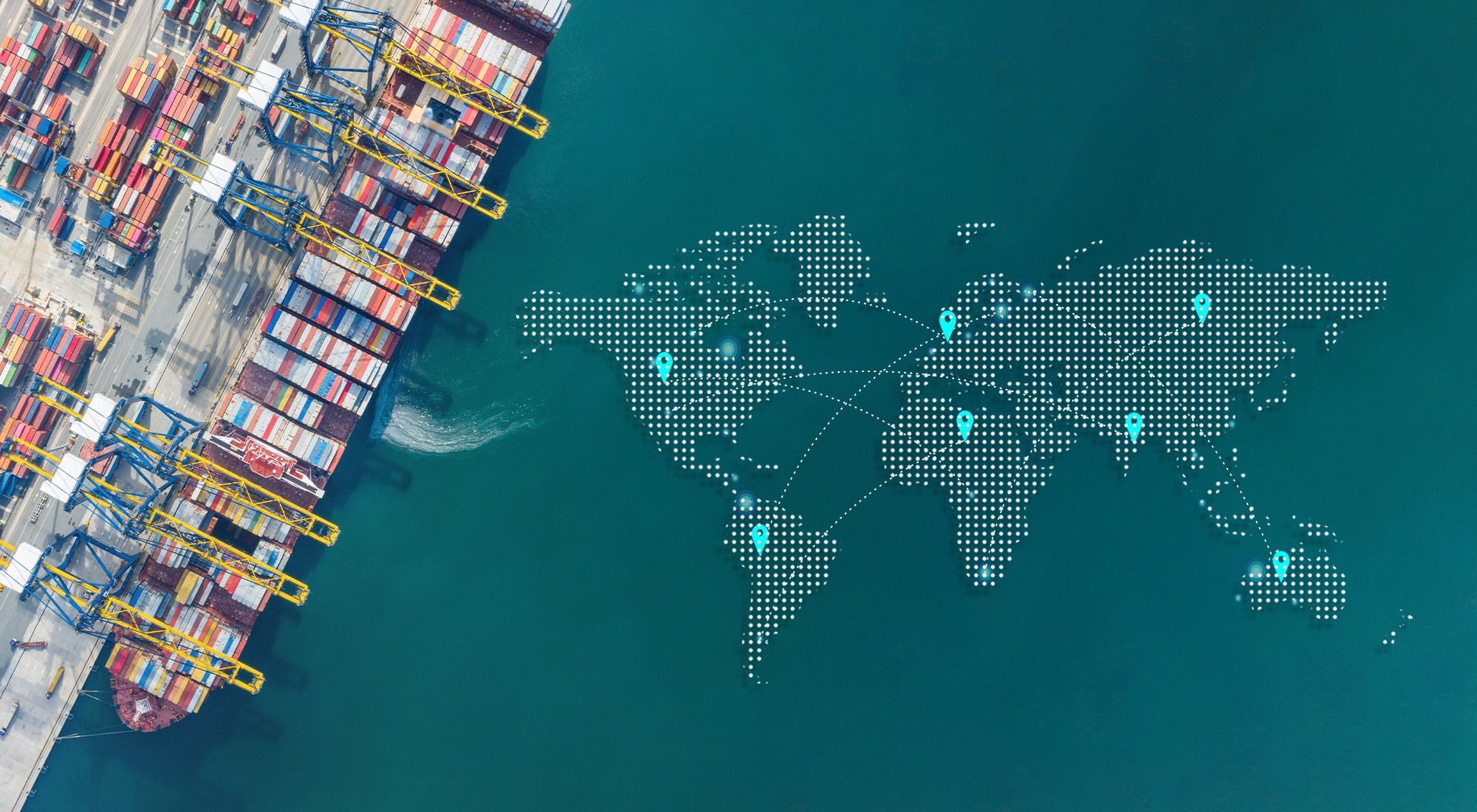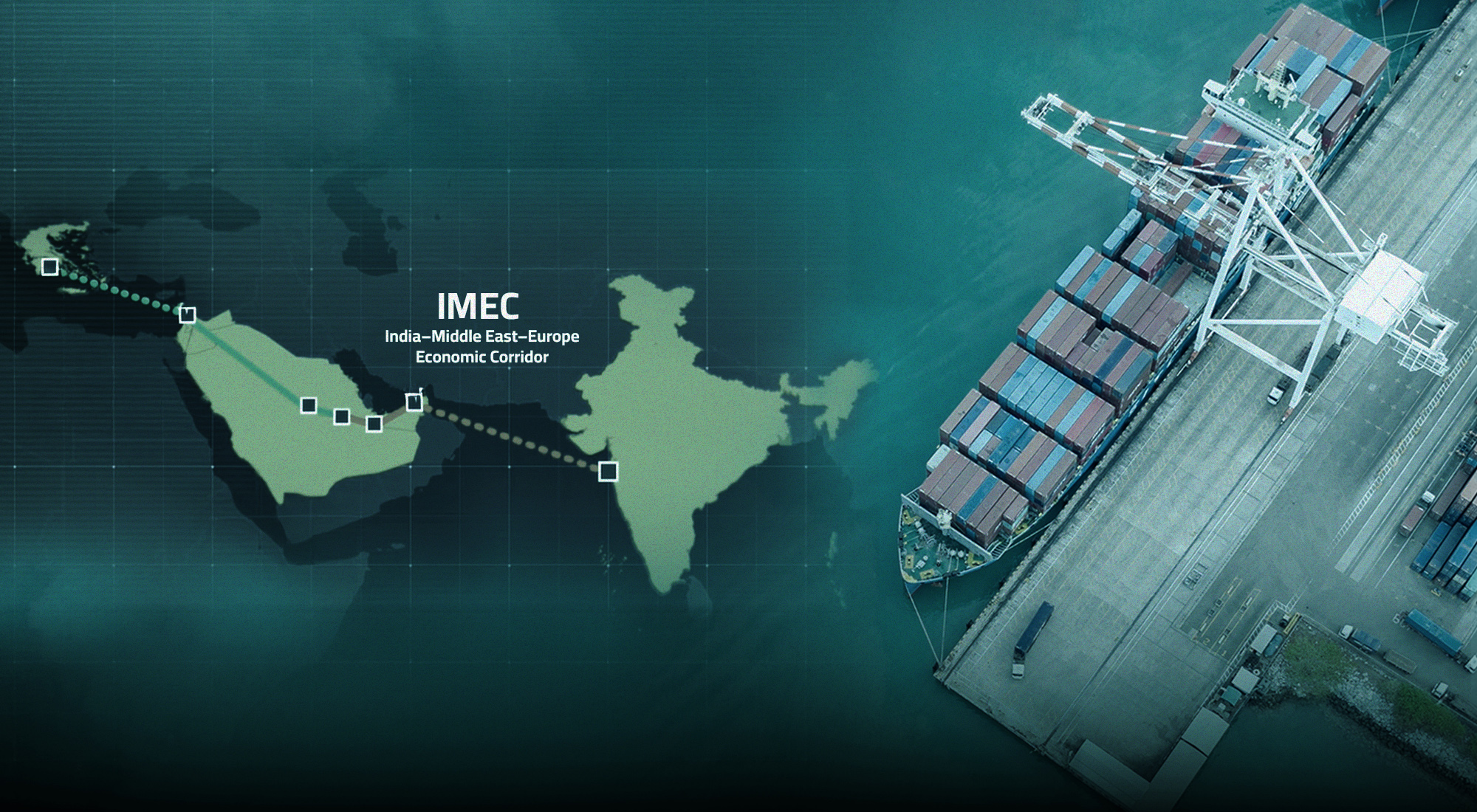Experts have long recognized the crucial link between international trade and infrastructure development as a cornerstone of global economic integration, drawing from historical trade routes to contemporary initiatives. These corridor networks have not only facilitated the movement of goods and ideas across borders but have also shaped the geopolitical landscape of the regions they pass through. This paper aims to dissect the multifaceted impact of international corridors on trade enhancement by first categorizing and analyzing these networks, highlighting their historical significance, key logistical and infrastructural features, and geographical contexts. It will delve into the modern investments driving these corridors, identifying the primary sources of funding while also exploring the types of projects that are being prioritized.
Beyond the Silk Road: Diverse Corridor Networks
The historical significance of corridor networks such as the Silk Road and Spice Route is evident in their role as conduits for both commercial and cultural exchanges. The Silk Road served as an important trade route for centuries, facilitating not only economic benefits through the exchange of valuable goods but also cultural exchanges that spanned diverse civilizations. The Eastern Mediterranean section of the Silk Road was especially crucial, as it enabled the transportation of commercial goods via ships to the west, acting as a vital link between distant lands. This maritime network was complemented by overland routes, with the Mediterranean serving as the western convergence point for these trans-Eurasian exchanges.[1] Furthermore, the production of silk by the Chinese and spices by the Indians underscored the emergence of these important trade routes, highlighting their relevance in historical trade dynamics. As these trade routes evolved, they not only distributed goods but also facilitated the sharing of ideas and cultures, which ultimately contributed to the development of new cultural elements across regions.
The Belt and Road Initiative (BRI) mirrors the ancient Silk Road in its ambition to create a comprehensive network that enhances trade and connectivity across vast regions, encompassing Eurasia and Africa. This initiative is a modern manifestation of the ancient corridor networks, emphasizing the strategic importance of infrastructure to facilitate seamless economic interactions and boost regional collaboration.[2] Therefore, the BRI’s approach to integrating land and maritime routes reflects a continuity in the strategic objectives of corridor networks, underscoring the enduring relevance of these ancient pathways in contemporary global trade.
What are the key logistical and infrastructural features of these corridors?
The key logistical and infrastructural features of modern transport corridors, such as those integral to the BRI, are underpinned by a complex network of nodes, routes, and interactions among various transport modes. At the core are nodes like ports, logistics centers, and stations, which serve as crucial junctions for facilitating the seamless transition of goods across different transportation modes. The corridors are comprised of diverse transport routes, including rail, road, and sea, each contributing to the overall efficiency and flexibility of the trade networks.[3] A critical logistical feature affecting these corridors is the frequency of freight trains, which directly influences transportation time and efficiency, especially in intermodal corridors where multiple transport modes intersect. Additionally, the interaction of transport modes at borders, such as the integration of maritime, road, and railway systems, is vital to ensure seamless operations and avoid unnecessary delays. However, challenges such as the unavailability of wagons can create bottlenecks, highlighting the need for robust logistical planning and infrastructure development to maintain optimal performance.[4] Therefore, enhancing these logistical and infrastructural elements through international cooperation and strategic investments is crucial to overcoming existing challenges and maximizing the economic benefits of these transport corridors.
Corridor Investment: Unlocking Trade Potential
Investment in international corridors primarily stems from two major sources: foreign direct investment (FDI) and development banks. Multilateral development banks, such as the World Bank and the Asian Development Bank (ADB), play a crucial role in facilitating infrastructure projects within these corridors by providing the necessary funding and support to address the investment shortfall, given their comprehensive approach toward promoting development through law, policy, and procedural measures.[5] These banks, however, often lack the capacity to meet the enormous investment needs on their own, highlighting the necessity for FDI to complement their efforts.[6] FDI is increasingly becoming a pivotal component in the establishment and expansion of development corridors, as evidenced by initiatives like the ‘Nanning-Singapore Economic Corridors’ and other similar projects, which are designed to attract private sector investment by creating an appealing economic environment.[7] The shift from reliance on traditional development assistance to more sustainable private investment models, such as FDI, underscores the evolving landscape of international cooperation in development corridors, further amplified by the strategic involvement of development banks. To ensure the successful implementation of these projects, it is imperative to foster a conducive investment climate that encourages private sector participation and maximizes the synergies between FDI and development bank initiatives.
Consequently, 212 investment deals worth USD 92.4 billion were recorded in 2023, marking an 18% increase from USD 74.5 billion in 2022. This engagement was split between financial investments (USD 44.6 billion) and construction contracts (USD 43.7 billion), with a portion of the latter financed through Chinese loans.[8] This upward trend highlights China’s continued commitment to expanding its global influence through the BRI. Moreover, a decade after its launch, the BRI has surpassed USD 1 trillion in cumulative investment, reaching a total of USD 1.053 trillion. This milestone reflects the substantial commitment China has made to the initiative. Of this total, approximately USD 634 billion has been allocated to construction contracts, while non-financial investments account for USD 419 billion. This demonstrates the significant role the BRI has played in fostering infrastructure development and economic cooperation across the globe.[9]
Infrastructure investment spans a broad spectrum of projects and funds, each catering to distinct investor profiles and risk appetites. A significant portion of these investments is directed toward economic infrastructure projects, which include critical assets like airports, toll roads, railways, and energy facilities. These projects are often classified under core infrastructure investments, known for their stability and governance under reliable regulatory frameworks. Such investments are particularly attractive to institutional investors and superannuation funds, who favor low-risk operating projects that promise consistent returns.[10] In contrast, unlisted infrastructure funds showcase a broader array of infrastructure types, offering exposure to both economic and social infrastructure projects.[11]
Risks of Investing in International Corridors
The risks and challenges associated with investing in international corridors are multifaceted, encompassing environmental, political, and economic dimensions that impact their long-term sustainability and attractiveness. For instance, the BRI highlights the environmental concerns stemming from large-scale transportation projects, underscoring the significant risks posed by their vast geographic reach.[12] Moreover, the geopolitical landscape further complicates the investment scenario, with conflicts in regions like the Middle East and Ukraine disrupting trade routes, thus creating unpredictability for investors in corridors such as CPEC, IMEEC, and INSTC.[13] This regional instability influences the shifting of investment flows, especially in South Asia and the Middle East, highlighting the need for diplomatic efforts and enhanced regional cooperation to stabilize these investment environments. Addressing these challenges requires integrated development and conservation planning to mitigate environmental risks and effective political strategies to manage geopolitical uncertainties.
Impact on Trade and Market Access
International corridors play a pivotal role in shaping trade volume and value by acting as conduits for economic activities and regional integration. The development of such corridors facilitates an improved transportation network, which is instrumental in catalyzing economic growth and regional development, thereby boosting trade volumes. Efficient transport systems within these corridors allow for the seamless movement of goods and people, significantly reducing costs and delays associated with trade logistics.[14] Furthermore, these corridors are not merely pathways for trade but also encompass investments in priority infrastructure sectors aimed at maximizing development impact within the same geographic space, thereby enhancing the value of trade. Additionally, the strategic emphasis on cross-border infrastructure development, trade, and investment creates a virtuous triangle that not only promotes higher economic growth but also contributes to poverty reduction.[15]
As countries capitalize on the comparative advantages afforded by international corridors, they facilitate cross-border trade and investment, which supports their competitiveness on a global scale. The bottom line here is while the primary function of international corridors is to increase trade volume and value, they also serve as catalysts for broader economic benefits, including enhanced fiscal resources and foreign direct investment, ultimately necessitating continued investment and strategic planning in their development and maintenance.
What role do corridors play in enhancing market access for participating countries?
As contemporary corridors mirror the historical trade routes in their ability to enhance market access, a critical factor in their success lies in the development of robust infrastructure, such as roads and bridges, which are essential for the efficient movement of goods and services. Corridors today, much like the Silk Road of the past, serve as conduits for trade, facilitating the flow of goods and investment across regions. By concentrating efforts in specific geographic areas, corridors nurture economies of scale and enable substantial agricultural investments, ultimately enhancing market access for participating countries.[16] This strategic approach not only unlocks agricultural potential but also commercializes smallholder agriculture in underdeveloped regions, thereby integrating them into broader economic systems. Corridors support value chain development, improving access to critical inputs, credit, and technology, which are essential for smallholders and other stakeholders aiming to access larger markets.[17] However, for corridors to achieve their full potential, it is vital to address inherent disparities, such as those faced by smallholders and vulnerable communities, to ensure equitable access to the economic opportunities they present. By fostering an enabling environment for private enterprise and mobilizing the private sector, corridors can facilitate increased economic activity and market participation, thus reinforcing their role in enhancing market access. Therefore, a focused effort on infrastructure development and strategic investment in corridor regions is essential for these pathways to become transformative tools for market access and economic growth.
Building upon the historical precedent set by ancient trade routes, modern transport corridors like the Belt and Road Initiative play a critical role in global economic integration by developing into comprehensive economic corridors. These corridors do not merely serve as pathways for the transit of goods but are integral in enhancing trade through the reduction of trade barriers and improvements in logistics services, thereby fostering economic cooperation on a global scale. As these corridors evolve, they expand beyond their initial geographical confines, creating ripple effects that stimulate social and economic development in the regions they connect.[18] This evolution from basic transport corridors to more complex economic corridors provides a platform for increased trade and investment, offering significant opportunities for employment and improving standards of living, all of which support sustainable economic development.[19] Moreover, the integration of existing road and rail networks within these corridors enhances logistics and distribution mechanisms, which are pivotal for facilitating seamless trade and commerce across borders.
Conclusion
International corridors, by facilitating trade, investment, and infrastructure development, serve as vital catalysts for economic growth and regional integration in the modern globalized world. However, to fully harness their potential, it is crucial to address environmental concerns, navigate geopolitical complexities, and ensure equitable access to the opportunities created for all stakeholders involved. Ultimately, the development of these corridors is not just about connecting geographical points but about creating dynamic interactions among regions, promoting regional economic development, and integrating less-developed areas into the global economy. This interconnectedness is crucial for achieving a more integrated global economic framework, necessitating strategic investments and policy interventions that prioritize both economic growth and sustainability.
[1] John Major, “Geographical Setting of the Silk Roads,” Asia Society, 2020, ereserve.library.utah.edu., retrieved January 8, 2025.
[2] Dinh Trinh Van, “The Rise of China’s Past in the “Belt and Road Initiative” (from Historical Perspectives),” In Islam M.N. (eds) Silk Road to Belt Road, Springer, Singapore (2019): link.springer.com/chapter/10.1007/978-981-13-2998-2_2., retrieved January 8, 2025.
[3] Igor Kabashkin and Zura Sansyzbayeva, “Methodological Framework for Sustainable Transport Corridor Modeling Using Petri Nets,” Sustainability 16, no. 2 (2024): www.mdpi.com/2071-1050/16/2/489., retrieved January 8, 2025.
[4]Madan B. Regmi and Shinya Hanaoka, “Assessment of intermodal transport corridors: Cases from North-East and Central Asia,” Research in Transportation Business & Public Management 5 (December 2022): www.sciencedirect.com/science/article/pii/S2210539512000697., retrieved January 8, 2025.
[5] Hong Yu, “Motivation behind China’s ‘One Belt, One Road’ initiatives and Establishment of the Asian Infrastructure Investment Bank,” China’s New Global Strategy, Routledge, 2020, www.taylorfrancis.com., retrieved January 8, 2025.
[6] Ibid.
[7] Jay Mittal and Anil Kashyap, “Real estate market led land development strategies for regional economic corridors – A tale of two mega projects,” Habitat International 47 (June 2015): www.sciencedirect.com/science/article/pii/S0197397515000272., retrieved January 8, 2025.
[8] CHRISTOPH NEDOPIL WANG, “China Belt and Road Initiative (BRI) Investment Report 2023,” Green Finance & Development Center, February 5, 2024, https://greenfdc.org/china-belt-and-road-initiative-bri-investment-report-2023/.
[9] Ibid.
[10] Gordon L Clark, Ashby HB Monk, Ryan Orr and William Scott, “The new Era of infrastructure investing,” Pensions: An International Journal 17 (2012): link.springer.com/article/10.1057/pm.2012.10., retrieved January 8, 2025.
[11] Hsu Wen Peng and Graeme Newell, “THE SIGNIFICANCE OF INFRASTRUCTURE IN INVESTMENT PORTFOLIOS,” Pacific Rim Real Estate Society, 2007, www.prres.org., retrieved January 8, 2025.
[12] Elizabeth Claire Losos, Alexander Pfaff, Lydia Pauline Olander, Sara Mason, Seth Morgan, “Reducing Environmental Risks from Belt and Road Initiative Investments in Transportation Infrastructure,” World Bank Policy Research Working Paper No. 8718 (January 25, 2019): papers.ssrn.com/sol3/papers.cfm?abstract_id=3323121., retrieved January 8, 2025.
[13] Syed Rizwan Haider Bukhari, Nasir Iqbal and Ehsanullah Khan, “Global Conflicts and Economic Corridors: Impact of Palestine and Ukraine on Key Trade Routes,” Journal of Development and Social Sciences (JDSS) 5, no. 3 (2024): www.ojs.jdss.org.pk/journal/article/view/1213., retrieved January 8, 2025.
[14] Prabir De, “Economic Corridors and Regional Economic Integration,” In Developing Economic Corridors in South Asia, Prabir De and Kavita Iyengar (eds), (Asia Development Bank, 2014): newasiaforum.ris.org.in., retrieved January 8, 2025.
[15] Ibid.
[16] Kate Elizabeth Gannon, Laetitia Pettinotti, Declan Conway, Swenja Surminski, Edward Ndilhana and Tobias Nyumba, Imaginaries of development corridors: Delivering the Sustainable Development Goals through development corridors in East Africa, Centre for Climate Change Economics and Policy Working Paper 383/Grantham Research Institute on Climate Change and the Environment Working Paper 355 (London: London School of Economics and Political Science, 2020): www.lse.ac.uk. retrieved January 8, 2025.
[17] Ibid.
[18] Albie Hope and John Cox, “Topic Guide: Development Corridors,” The Asian Dialogue, 2015, theasiadialogue.com., retrieved January 8, 2025.
[19] Srimal Fernando, “A Novel Approach for Integration in South Asia,” The Routledge Handbook of South Asia, 2023, www.taylorfrancis.com., retrieved January 8, 2025.








